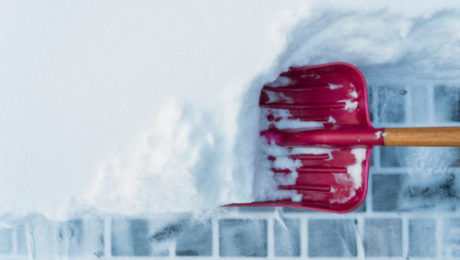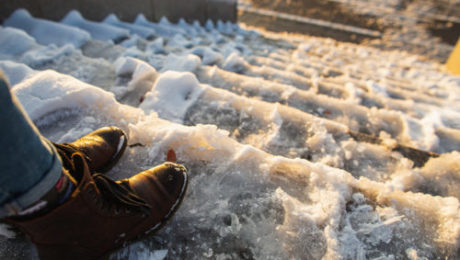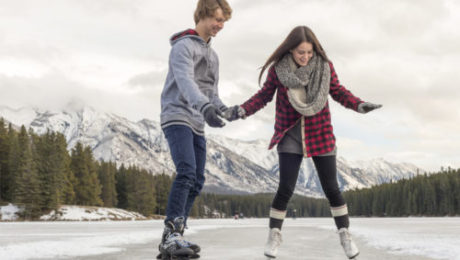Monitoring Snow Loads to Protect Structures
This article is from RISQ Consulting’s Zywave client portal, a resource available to all RISQ Consulting clients. Please contact your Benefits Consultant or Account Executive for more information or for help setting up your own login.

Major snow events can impact the integrity of a structure, making it imperative for commercial property owners to understand their building’s characteristics and structural system prior to the start of the snow season. Having familiarity with the building structure can help owners determine if any changes occurred during a major snow event and if repairs are necessary. This article discusses key building information owners should be aware of, what to look for during a pre-season inspection and warning signs of a building in duress.
Key Building Information
A commercial property owner’s knowledge of their building could be the difference between getting through a major snow event safely or experiencing structural failure. Property owners should know the following regarding the current condition of the structure:
- Applicable building codes
- Design snow load
- Structural framing system
- Thermal properties
- Renovation history
Pre-season Inspection
A proper commercial building inspection can reveal the actual condition of a property and give owners the opportunity to fix any problems before the snow season begins. To mitigate damage and identify any potential issues, commercial property owners should:
- Perform a detailed inspection. Check for cracks, split seams, buckling, loose parts, staining, mold and rot while inspecting:
- Surface membranes
- Roof vents
- Flashing
- Field tears
- Gutters
- Drainage pipes
- Clean debris. Ensure the roof is clear of debris, including fallen branches, leaves and garbage. Debris can prevent water from draining, allowing snow to buildup and cause water damage or add weight to the structure.
- Look for pooling water. Keep an eye out for areas where water pools, as this could be an indication of a clogged drain or slow-draining line.
- Check the flashing. Inspect the flashing—the thin material used to direct water away from certain areas on the roof—before winter for cracks or crevices that would allow water to enter.
- Inspect the downspouts. Ensure downspouts are properly attached to the gutters, clear of debris and that their termination bars are sealed.
While these can all be inspected regularly by the owner or an employee, utilizing a certified roof inspector who knows what to look for can help ensure the roof is in good condition before any major snow events occur.
Warning Signs of Duress
Roof decks or framing that is under duress from snow loads typically display warning signs. Commercial property owners should watch for the following signs in wood, metal and steel constructed buildings:
- Ceiling tiles or boards that are sagging or falling out of the ceiling grid
- Sprinkler lines and sprinkler heads that are sagging or deflecting below suspended ceilings
- Roof members, such as metal decking or plywood sheathing, that are sagging
- Doors or windows that no longer open or close
- Wood members that are cracked or split
- Walls or masonry that are cracked
- Truss bottom chords or web members that are bowing
- Popping, cracking and creaking noises
If any of these warning signs are observed, the building should be promptly evacuated, and a detailed structural inspection should be conducted by a qualified professional.
Conclusion
Major snow events can cause a lot of damage to a commercial structure, especially if it hasn’t been properly inspected and maintained. Therefore, commercial property owners should ensure that their building is prepared for winter weather by inspecting the structure and making any necessary repairs. For more information, contact us today.
- Published in Blog
Quick Tips: Save Money on Energy in Your Household
This article is from RISQ Consulting’s Zywave client portal, a resource available to all RISQ Consulting clients. Please contact your Benefits Consultant or Account Executive for more information or for help setting up your own login.

According to the National Energy Assistance Directors Association, energy costs will reach a decade-long high this winter. Heating costs are predicted to rise 28% for U.S. households relying on natural gas and 27% for those using heating oil. Electricity costs are also anticipated to increase 10% per the U.S. Energy Department. Read on for tips on how you can lower the energy bills for your home.
Why Are Heating Costs Rising?
Many factors have contributed to the rapidly increasing energy costs this year including the following:
- A predicted colder-than-average winter
- Rising wholesale gas prices
- Depleted energy stores from increased demand during the 2020 and 2021 lockdowns
- Lowered supply stemming from financial sanctions put on Russian oil after the invasion of Ukraine
How Can I Reduce Energy Costs in My Household?
With skyrocketing prices, you may be wondering how you can reduce or control your winter utility bills. Many may be tempted to simply turn down the thermostat. Fortunately, there are ways you can lower your energy bills while staying warm this winter.
Here are some tips to help you lower your energy bills:
- Use a programmable thermostat to automatically lower your temperature when you’re not home.
- Seal areas where heat could escape from your windows and doors.
- Ensure radiators and vents are unobstructed.
- Open curtains and windows during the day and close them at night.
- Replace your furnace filter if it’s dirty.
- Have a professional inspect your HVAC systems for leaks.
- Close the vents and shut the doors to rooms you’re not using.
- Consider other sources of energy waste (e.g., leaky faucets, inefficient light bulbs).
Cold weather may make some increased energy costs inevitable. By using the above tips, and consulting the Department of Energy’s Energy Saver Guide, you can be well on your way to managing your winter utility bill.
For additional winter home safety tips, contact us today.
- Published in Blog
Avoid Winter Slip-ups
This article is from RISQ Consulting’s Zywave client portal, a resource available to all RISQ Consulting clients. Please contact your Benefits Consultant or Account Executive for more information or for help setting up your own login.

Winter months present additional hazards that are typically not factors for employees during warmer weather – specifically, slip and fall concerns. With snow and ice-covered conditions, you run the risk of taking major falls, which can lead to serious injuries.
Prevention
Education is essential in preventing winter weather-related injuries. Consider the following recommendations to prevent slip and fall injuries during the winter months:
- Wear the proper footwear that provides traction on snow and ice. Footwear should be made of anti-slip material; avoid plastic and leather-soled shoes or boots.
- Exercise caution when entering and exiting vehicles, and use the vehicle for balance and support.
- Try to walk only in designated areas that are safe for foot traffic. If you notice that a walkway is covered in ice, walk on the grass next to the sidewalk, which will have more traction.
- Avoid inclines that are typically difficult to walk up or down as they may be more treacherous in winter conditions.
- Take small steps to maintain your center of balance, walk slowly and never run. When possible, walk with your hands free to maintain your balance. And despite the cold temperatures, avoid putting your hands in your pockets. This will help you better maintain your balance and allow you to break a fall should you slip.
- Use handrails, walls or anything stationary to assist in steadying your feet.
- Look ahead to the path in front of you to avoid hazards.
- Test a potentially slippery area before stepping on it by tapping your foot on the surface first.
- Remove debris, water and ice from all working walkways.
- Steer clear of roof edges, floor openings and other drop-offs to avoid slipping hazards.
- Sand or salt surfaces covered by ice or snow to provide traction.
- Dry your shoes or boots on floor mats when entering a building.
- Report trip and fall hazards immediately to your supervisor.
- Seek shelter immediately in the event of severe weather conditions.
If You Begin to Slip…
- Twist your body and roll backward to avoid falling forward and injuring your face.
- Try to relax your body when you start to feel your legs give way.
If you are carrying a load, throw it off to the side so it does not land on you when you fall. This will also free your arms to help break your fall.
- Published in Blog
Skating into Winter
By Madasin Jennings, Account Specialist
It has begun. The leaves have changed, the temperature has dropped, and the days are getting darker. Winter is here and for me, this means it’s time to start thinking about winter activities.
In the past, I have always preferred to spend my summers outdoors while spending my winters indoors. So, winter activities aren’t something I am too familiar with. My boyfriend, however, is a fan of all weather, especially winter. Skiing and playing hockey are among two of his favorite things to do in winter. Last season, I hit the slopes a grand total of one time. I did, however, take to ice skating like a duck on (frozen) water.
Like most people in my generation, when I want to know more about something, I google it. For anyone wanting to learn how to ice skate, this article would be a great start. It starts off at the basics: clothing dos and don’ts, choosing the right ice skates for you, and how to properly lace up. Start slowly and it’s ok to stick close to the barrier! This will help you get a feel for the ice and how your body reacts to movements on the ice until you can find your balance. There are tips on proper skating stance and a few things to think about as you start gaining momentum, like learning how to stand and stop. These are all important steppingstones that will help glide you toward success.
For me, the most important thing to take away from this article is to be patient with yourself. Take it one glide at a time and learn as you go, while also remembering to have fun. Don’t waste away indoors while a winter wonderland sits right outside your window. Get out there and try something new!
10 Tips for Ice Skating Beginners:
https://iceskatingpassion.com/first-time-ice-skating-tips-beginners/
- Published in Blog





